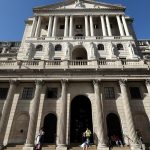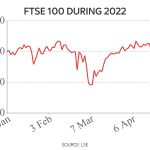The upheaval in gilt (UK government bond) markets that led to last week’s spectacular intervention from the Bank of England continues to reverberate.
The Bank was obliged to buy long-dated gilts – those with a maturity of 20 or 30 years – on Wednesday last week following a wave of forced selling by pension funds.
Those pension funds had been engaging in strategies known as liability-driven investment (LDI) which, despite becoming a £1.5 trillion market, was until last week little known outside the world of pensions investing.
Under the strategies, pension funds seek ways to better match their assets (the retirement savings of scheme members) with their liabilities (the future pension payments that have been promised to those members on their retirement).
They did so using derivatives contracts – a way of using leverage – but, when gilt yields spiked higher as markets took fright at Kwasi Kwarteng‘s borrowing plans in his mini-budget, the investment banks that write those derivatives contracts sought more money from the pension funds to reflect the fact that gilt prices were falling (the yield and the price move in opposite directions).
The episode has led to a lot of misunderstanding. One is that the Bank has spent £65 billion propping up the gilt market. It hasn’t: it has simply indicated that the maximum it could end up spending under its intervention will be £65 billion.
Another is that this is some kind of taxpayer bail-out of pension funds. Again, it isn’t.
Don’t raise interest rates, UN warns the Federal Reserve and other central banks
‘UK-specific component’ of post-mini-budget market turmoil, Bank of England chief economist says, contradicting government defence
How a pensions technicality threatened to undermine the entire financial system
It is more akin to the Bank’s asset purchase scheme, or Quantitative Easing in the jargon, under which the Bank bought assets like gilts and held them on its balance sheet, although the Bank would prefer this latest move not to be regarded as QE, more a special operation to ensure more orderly market conditions.
Pension funds have not been given something for nothing by taxpayers and nor does the Bank emerge with nothing for the money it spends – it emerges with a holding of gilts on which interest will be payable by the government.
Other misconceptions concerned those who participate in LDI.
Shares of Legal & General, one of the biggest insurance companies in the FTSE-100, have come under pressure since questions began being asked about its participation in the LDI market.
Between the close on 22 September – the night before Mr Kwarteng unveiled his mini-budget – and the close of business last Friday night, shares of Legal & General fell by just under 15%.
That may be because the episode shone a spotlight on L&G’s role in the LDI market in an unflattering way. It was widely reported that the sell-off gathered momentum early last week because L&G had been requesting that pension fund clients put up more cash in response to falling gilt prices.
The investment bank Jefferies had said on Monday that the insurer could be exposed to fund outflows as a result: “The biggest risk for L&G is that this crisis has discredited the firm’s risk management abilities.
“In the process, it’s possible that this sparks outflows from LDI funds, as clients reallocate to alternative strategies, with lower liquidity risks.”
So today’s stock exchange announcement from L&G, in which it clarified its role in LDI and set to soothe the anxieties of investors, is a big deal.
The company made clear that Legal & General Investment (LGIM), its asset management arm, has merely been acting as an agent between LDI clients – pension funds – and market counterparties sitting on the other side of those trades, chiefly investment banks.
It added that, as a consequence, it “therefore has no balance sheet exposure”.
L&G also praised the Bank’s intervention and said that, as a result, interest rates had come down.
It added: “These steps have helped to alleviate the pressure on our clients.”
The insurer added for good measure that, although it holds gilts as part of its investment activities, the sell-off had not affected its capital or liquidity position.
It went on: “Despite volatile markets, the group’s annuity portfolio has not experienced any difficulty in meeting collateral calls and we have not been forced sellers of gilts or bonds.”
Shares of L&G have rallied by more than 5% on the statement while shares of Aviva and Phoenix Group, two other big FTSE-100 life companies, have also bounced.
While L&G’s statement may have calmed nerves about its own role in the LDI market, it may not do so for the market as a whole. People are rightly confused and concerned about how defined benefit pension funds, which, in theory, should be an exceptionally safe and dull corner of the investment universe, have suddenly – thanks to the involvement of derivatives products – been made inherently more risky and prone to the vagaries of market movements.
Lord Wolfson, the chief executive of Next and one of the most influential figures in British business, said last week that he had written to the Bank in 2017, when Mark Carney was governor, outlining his concerns about LDI strategies.
He said the strategy – buying gilts and then using them as collateral to obtain further exposure to the gilt market – “always looked like a time bomb waiting to go off”.
So L&G’s statement today is far from being an end of the matter.
The Commons Treasury Select Committee is now looking into the issue and is set to question the Pensions Regulator. The Financial Conduct Authority and the Bank are also likely to be asked what they knew.
One of the bankers who helped invent LDI strategies told the Financial Times this week that the technique had “helped stabilise pension funding over the past two decades” and that it had helped “provide a future for millions of members of defined-benefit funds”.
But it seems likely that the Bank, which is mandated to maintain the stability of the UK’s financial system, will now be looking to make this particular corner of the markets less risky.






















